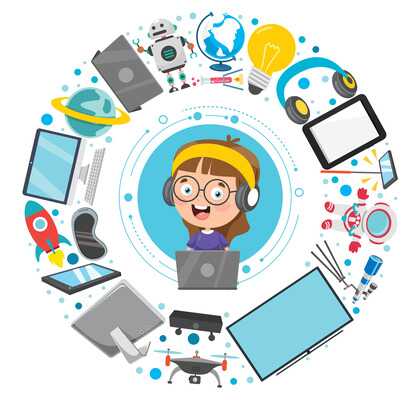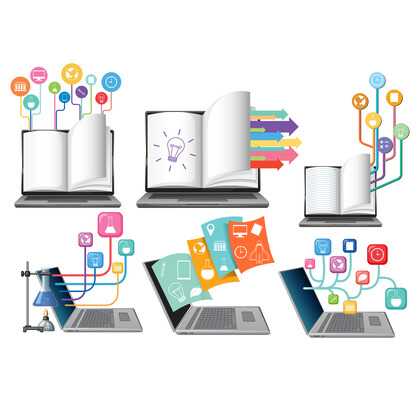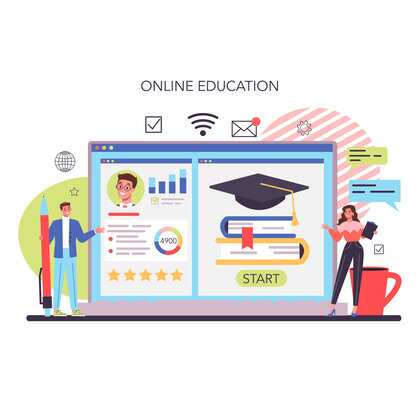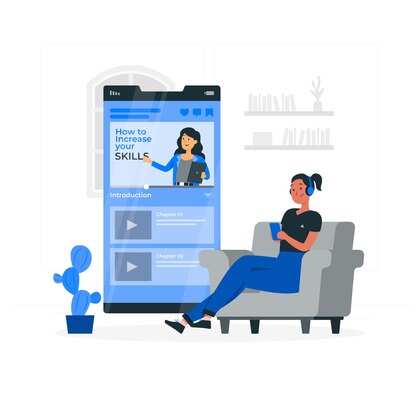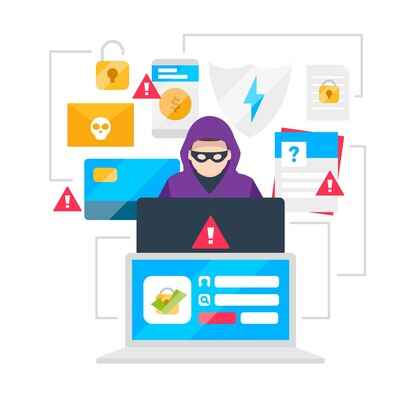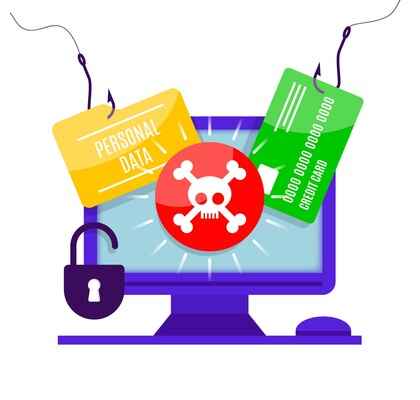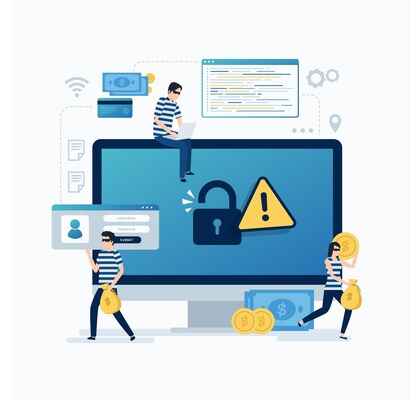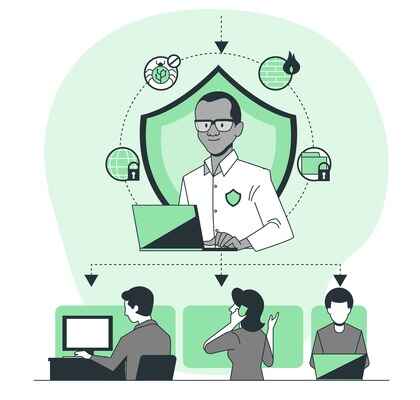I. Introduction
Technology has revolutionized various aspects of our lives, including the way we learn and educate ourselves. Traditional education methods are being transformed by the integration of technology, leading to the emergence of tech-driven education. EdTech, or educational technology, plays a crucial role in this paradigm shift by leveraging technological advancements to enhance teaching and learning experiences. In this article, we will explore the impact of technology on education, different types of EdTech tools, the benefits of tech-driven education, challenges and concerns, successful implementation strategies, case studies, future trends, and more.
II. The Impact of Technology on Education
Technology has significantly transformed the landscape of education, opening up new opportunities for students and educators alike. EdTech has the power to revolutionize the way knowledge is acquired, shared, and applied. By integrating technology into education, traditional classroom boundaries are transcended, and learning becomes more accessible, engaging, and personalized.
1. The Role of EdTech in Transforming Education
EdTech serves as a catalyst for innovation in education. It enables educators to adopt new teaching methodologies, create interactive learning environments, and customize educational content to meet the diverse needs of students. With the help of technology, traditional classroom setups are evolving into digital learning spaces that foster collaboration, critical thinking, and creativity.
2. Advantages of Using Technology in the Classroom
The use of technology in the classroom brings numerous advantages. It enhances the learning process by providing multimedia resources, interactive presentations, and virtual simulations that make complex concepts easier to understand. Students can access a wealth of information online, enabling them to explore diverse perspectives and develop a broader understanding of subjects. Additionally, technology facilitates communication and collaboration among students, enabling them to work together on projects and share ideas effectively.
III. Different Types of EdTech Tools
EdTech encompasses a wide range of tools and applications designed to enhance educational experiences. Here are some prominent types of EdTech tools commonly used in classrooms:
1. Learning Management Systems (LMS)
Learning Management Systems are comprehensive platforms that facilitate the administration, delivery, and tracking of educational content. LMS allows educators to create online courses, manage student progress, distribute assignments, and provide feedback. These systems streamline the learning process and enable remote learning, making education more accessible to students regardless of their location.
2. Online Collaborative Tools
Online collaborative tools enable students and teachers to collaborate and communicate effectively in virtual environments. These tools facilitate group projects, discussions, and knowledge sharing, breaking the barriers of physical classrooms. Features such as real-time document editing, video conferencing, and instant messaging enhance collaboration and foster teamwork among students.
3. Gamification and Educational Games
Gamification is the integration of game elements into educational activities to enhance engagement and motivation. Educational games make learning interactive and enjoyable, turning complex concepts into immersive experiences. By incorporating elements such as rewards, leaderboards, and challenges, gamification promotes active learning and encourages students to actively participate and progress in their educational journey.
4. Virtual and Augmented Reality
Virtual and augmented reality technologies offer immersive experiences that bring learning to life. Virtual reality (VR) creates simulated environments, allowing students to explore historical places, distant planets, or scientific phenomena. Augmented reality (AR) overlays digital information onto the real world, enhancing understanding and engagement. These technologies make abstract concepts tangible and foster experiential learning.
IV. Benefits of Tech-Driven Education
Tech-driven education offers a plethora of benefits for students, educators, and educational institutions. Here are some notable advantages:
1. Personalized Learning Experiences
Technology enables personalized learning experiences tailored to individual student needs. Adaptive learning platforms use data and algorithms to customize content and provide targeted instruction. Students can learn at their own pace, focus on their strengths, and receive personalized feedback, promoting better learning outcomes.
2. Improved Engagement and Motivation
Integrating technology into education makes learning more interactive, engaging, and enjoyable for students. Interactive multimedia resources, gamified activities, and real-world simulations capture students’ attention and foster intrinsic motivation. Engaged students are more likely to retain information, develop critical thinking skills, and actively participate in the learning process.
3. Access to a Wide Range of Educational Resources
Technology provides access to a vast array of educational resources beyond traditional textbooks. Online libraries, digital archives, educational websites, and open educational resources offer a wealth of information and diverse perspectives. Students can explore different learning materials, conduct research, and gain a comprehensive understanding of subjects
V. Challenges and Concerns
While EdTech brings numerous benefits, it also poses challenges and concerns that need to be addressed for successful implementation. Some key challenges include:
1. Privacy and Security Issues
As technology collects and stores sensitive student data, privacy and security become major concerns. Educational institutions and EdTech providers must prioritize data protection, adhere to privacy regulations, and implement robust security measures to safeguard student information from breaches and unauthorized access.
2. Training and Support for Teachers
Integrating technology effectively requires adequate training and support for teachers. Many educators may lack the necessary digital literacy skills or struggle with integrating EdTech tools into their teaching practices. Comprehensive training programs and ongoing support can empower teachers to leverage technology effectively and create impactful learning experiences.
3. The Digital Divide and Accessibility
The digital divide refers to the gap in access to technology and internet connectivity among students. Some students may lack the necessary devices or reliable internet access, limiting their participation in tech-driven education. Ensuring equitable access to technology and bridging the digital divide is crucial to avoid exacerbating educational inequalities.
EdTech is revolutionizing the way we learn, making education accessible to all.
– Robert Johnson
VI. Successful Implementation of EdTech
To ensure the successful implementation of EdTech, educators and educational institutions should consider the following strategies:
1. Effective Integration Strategies
Integrating technology into education should be a well-planned process. Educators should align EdTech tools with learning objectives, curriculum standards, and pedagogical approaches. Technology should complement teaching methodologies and enhance learning outcomes, rather than being used for its own sake.
2. Professional Development for Educators
Providing comprehensive professional development opportunities for educators is essential. Training programs should focus on developing digital literacy skills, familiarizing teachers with EdTech tools, and supporting them in designing effective tech-integrated lesson plans. Ongoing professional development ensures that teachers stay updated with the latest advancements in EdTech and can maximize its potential in the classroom.
3. Monitoring and Evaluation of EdTech Programs
Regular monitoring and evaluation of EdTech programs help assess their effectiveness and identify areas for improvement. Educators should collect data on student performance, engagement levels, and feedback to gauge the impact of technology on learning outcomes. This data-driven approach allows for evidence-based decision-making and continuous refinement of EdTech initiatives.
VII. Case Studies of Tech-Driven Education
Several case studies highlight the successful implementation of tech-driven education:
1. Flipped Classrooms
In a flipped classroom model, students watch instructional videos or engage with digital content before attending class. Classroom time is then dedicated to interactive discussions, collaborative activities, and problem-solving. Flipped classrooms promote active learning, student engagement, and individualized instruction.
2. Adaptive Learning Platforms
Adaptive learning platforms use data analytics and algorithms to personalize instruction based on individual student needs. These platforms assess students’ strengths and weaknesses, adapt the content to their learning styles, and provide targeted remediation or enrichment. Adaptive learning promotes self-paced learning, mastery of concepts, and differentiated instruction.
3. Virtual Field Trips and Remote Learning
Virtual field trips allow students to explore historical sites, natural wonders, or cultural landmarks from the comfort of their classrooms. Remote learning, especially during challenging times like the COVID-19 pandemic, has been facilitated by EdTech tools such as video conferencing, online collaboration platforms, and virtual classrooms. These initiatives provide students with valuable experiences and ensure continuity in education.
VIII. Future Trends and Innovations in EdTech
The field of EdTech is continuously evolving, and several future trends and innovations hold promise for further transforming education:
1. Artificial Intelligence and Machine Learning
Artificial intelligence (AI) and machine learning (ML) technologies can revolutionize education by personalizing learning experiences, automating administrative tasks, and providing intelligent tutoring. AI-powered chatbots can offer personalized assistance, while ML algorithms can analyze student data to provide targeted interventions and adaptive content.
2. Personalized Learning Algorithms
Advancements in personalized learning algorithms enable precise customization of educational content, delivery, and assessment. These algorithms analyze individual learning patterns, preferences, and performance data to create tailored learning paths and recommendations. Personalized learning algorithms empower students to take ownership of their learning and optimize their educational journey.
3. Internet of Things (IoT) in Education
The Internet of Things (IoT) can enhance the learning environment by connecting physical objects and devices to the internet. IoT-enabled classrooms can offer interactive whiteboards, smart projectors, and wearable devices that gather real-time data on student engagement and performance. IoT technology facilitates seamless communication, automation, and data-driven decision-making in educational settings.
IX. Conclusion
Tech-driven education, powered by EdTech tools, has the potential to revolutionize learning by creating personalized, engaging, and inclusive educational experiences. The integration of technology in the classroom enhances student engagement, promotes collaboration, and expands access to educational resources. However, challenges such as privacy concerns, teacher training, and the digital divide need to be addressed for successful implementation. By leveraging effective integration strategies, providing professional development opportunities, and continuously monitoring and evaluating EdTech programs, educational institutions can unlock the full potential of tech-driven education.











